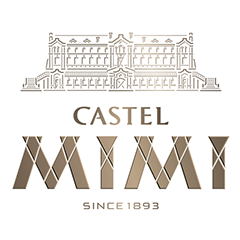Moldova Wine Class
140 years of experience
Phone
(310) 856-5488
Website
When
5pm PST Book NowPrice
$FREE
Overview
Hidden Giants; Exploring the World of Moldovan Wine
While France, Italy and Spain may hold the lion’s share of an industry which is over 35 billion bottles strong, there are many other players in the game. The world of Moldovan wine may be lesser known than other European countries, but that makes it somewhat of a hidden gem for those who seek something off the beaten path.
If These Vines Could Talk
In Eastern Europe, bordered by Romania and Ukraine, lies the small country Moldova. The picturesque hilly landscape provides the perfect climate for a variety of grapes, and fossils how that grape vines have been growing here for over 6 million years, though they were not fermented and bottled yet (talk about an aged wine). Grape seed fossils reveal that wine making in Moldova began as early as 5000 years ago, and is continued today.
The story was not always pretty, however. Production has been shut down in the entire country multiple times. The Ottoman rule left the vines decimated for 300 years with their strict “no alcohol” policy. Then there was the Great Wine Blight. And then the wars. And of course, Russian prohibition. And then the blanket ban on all Moldovan wines in Russia. But at every turn, the Moldovan vintners and wineries have dusted themselves off and started anew. Now expanding their reach to Eastern Europe, Great Britain, North America, and even China; the vines have never been better.
The Grapes of Moldova
Though many regions of Moldova are used for wine production, the southern region is considered most important. Red wines from the southern region of Moldova are often sweet or semi-sweet. White wines are produced here as well, and have high alcohol content when finished.
The majority of the grapes in Moldova are white grapes which come from other parts of Europe. There are some domestic varieties as well; but as Moldovan wines are often created for export, it is the European grapes which are seen the most.
White varieties often found in Moldova include:
- Sauvignon blanc
- Chardonnay
- Pinot blanc
- Pinot gris
- Muscat
- Riesling
- Aligote
Red wines of Moldova include:
- Merlot
- Pinot Noir
- Cabernet Sauvignon
Only a few native varieties of grape can still be found in mass production on Moldovan vines today. The Fetească alba is an indigenous white grape which often finds its way into the delicious sparkling wines of Moldova. The grape has been cultivated in Moldova since the ancient Dacians lived there.
The Rară neagră is a traditional red used to create fruity, light bodied red wines. While most people will go for a familiar name like Pinot Noir when reaching for a bottle, Rară neagră may surprise and delight anyone in the mood for a refreshing wine with a fruity body.
Surprises Abound
Small as the land may seem, it plays host to a few surprises. Moldova is home to the world’s largest underground cellar. It has a Guinness world book of record’s certification and all. With nearly 2 million bottles housed in a 250km cellar; the Mileștii Mici is irresistible eye candy for any wine lover. Plus, with over 25 percent of the population working in the wine industry, you will be among friends on a trip to Moldova. Add to this the variety and richness of the food and you are one plane ticket away from a “bucket list” fulfilling journey for any wine enthusiast.
Cristina Frolov Castel Mimi Winery
Why take this SommClass?
Why take this Sommclass
Moldova has 112,000 hectares of vineyards planted with over 50 types of wine grape varieties, 10% of which are local types, 17% are Caucasian, and 73% are European.
The country sits on similar latitudes to the classic wine regions of the world, like Bordeaux and Piedmont. Coupled with low hills, sun-soaked plains, flowing rivers, and moderately-continental climate with influences from the Black Sea, Moldova offers suitable conditions for cultivating high-quality wine grapes.
There are three Protected Geographical Indication (PGI) Moldovan wine regions: Codru (central Modolva), Valul lui Traian (southwest Moldova), and Ștefan Vodă (southeast Moldova). The latter two are more renowned for reds because of the southerly location and slightly warmer climate. However, there are some age-worthy, cool-climate reds from the Codru region as well. On the other end of the spectrum, Moldova has many aromatic white grapes and the wines made from those grapes tend to be fresh and floral. Other styles made in Moldova include sparkling and sweet. The latter includes icewines, which can be outstanding and some of the best in the world—especially if one considers their price-quality ratios. The former consists of generally simple wines with less than a handful of exceptions; however, Moldovan sparkling wine, in fact, has a history dating back to the 1950s as the deep limestones quarries at Cricova Winery (second biggest wine cellar in the world, with 120 kilometers underground tunnel that goes as deep as 100 meters below ground) and Mileștii Mici Winery proved ideal for aging and storing traditional-method sparkling wine.
Why Moldovan Wines?
How many wine regions are there in Moldova?
There are 3 historical wine regions: Valul lui Traian (south west), Stefan Voda (south east) and Codru (center), destined for the production of wines with protected geographic indication. In 2014, Moldova was the twentieth largest wine producing country in the world.
World's largest wine collection?
Moldova's Mileștii Mici proudly claims the title as the largest wine cellar in the world. ... hailed from Moldova. Mileștii Mici holds almost two million bottles, earning recognition from the Guinness Book of World Records as the world's largest wine collection.
Your host

Cristina Frolov
Cristina manages the winery “Castel MIMI”. She oversaw the complete renovation process of the castle, which was later returned to the national and regional tourist circuit. Moreover, Cristina Frolov is a member of the Coordinating Council of ONVV, representing the Wine Association of the Geographical Delimited Region “Codru” and held the position of president of the National Association for Inbound Tourism (ANTRIM), an organization whose mission is to promote the tourism sector from the country. She also graduated from the Academy of Economic Studies in Bucharest, is married and raises two children. The National Office of Vine and Wine of Moldova has a new director, Cristina Frolov exposes her main challenge: ” the problems the wine sector is facing require extensive collaboration and cooperation with all the industry members ” Cristina Frolov succeeds to Dr. Gheorghe Arpentin.
How to participate
This experience is hosted online.
Once you book, you’ll receive an email with a link and details on how to join.
What to bring
Indispensable
Desktop computer or mobile phone
Stable internet connection
Optional
Quality Chilean Wine/s
Availability
Things to keep in mind
Communication
Always communicate through our support email (class@sommtable.com)
ID Please
You’ll need need to confirm you're legally over the age of 21 before accessing the classroom
Guest requirements
You’ll need an internet connection and the ability to stream audio and video to participate. A link and details on how to join will be included in your booking confirmation email.
More tips
Please make sure that you have the Zoom app (www.zoom.us) downloaded on your smartphone, computer, or tablet.
Cancellation policy
Any experience can be canceled and fully refunded within 48 hours of purchase





 Share
Share
Sample Comment
25 Apr 2024
Wine and food lovers, and travelers alike have illustrated genuine consumer goodwill by taking to the web to share their best and worst eating experiences. If you´re eager to share your hits and misses, here are some points to write a compelling restaurant review that cannot be ignored.
1) Offer Some Background
2) Give Both Pros & Cons comments
3) Name Specific wines and entrees
4) Evaluate the Entire Experience
5) Let Your Personality Shine Through.